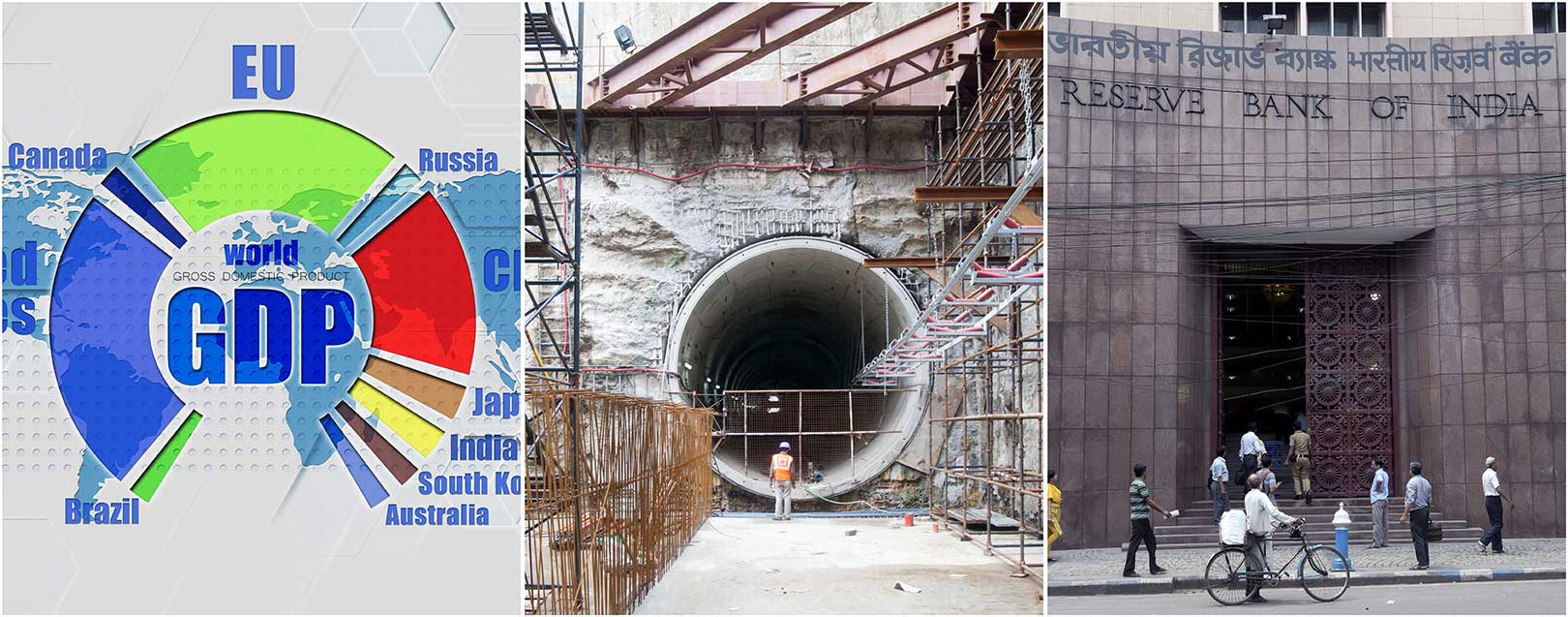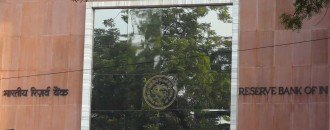
Economy in the week gone by: GDP growth for FY17 at 7.1%; Domestic iron ore prices remain high; Policy rates on hold
By Abin Daya
The oil situation is more fluid than the fuel itself, despite all the efforts of OPEC and non-OPEC producers. While the extending of the supply cut was to have provided some stability to prices, this does not seem to be the case. Prices of India’s basket of crude have dropped to their lowest levels in 28 weeks. And with the strengthening of rupee, this seems to have given RBI ample opportunities to shore up its FX reserves, which are currently at $381Bn, more than a year’s import worth. The only thing missing here is the drop-in retail fuel prices. Hopefully, it will happen soon.
The Provisional Estimates of full year and Q4 GDP and GVA numbers were released on 31 May, and we discuss this in detail during this week. While demonetisation has hit growth in Q4, the full-year numbers seem to have been maintained, thanks to some revisions in Q1 numbers from what was previously reported.
Manufacturing has been pretty badly affected by demonetisation, and there is still no respite even for well performing industries such as the Steel sector. While input costs are increasing, fall in demand combined with drop in steel prices in international markets is putting pressure on profitability. We take a brief look at this.
Finally, we also look at the most talked about event in the last week – the monetary policy announcement. While it was widely expected for RBI to hold rates, some believe there was enough opportunity to cut rates, this time around. We try to provide another perspective to the entire discussion.
GDP growth for FY17 at 7.1%
- The latest estimates of national accounts released by the Ministry of Statistics & Program Implementation (MOSPI) has estimated a GDP growth of 7.1% for FY17
- While growth in GVA was at 6.6%, net taxes grew by 12.8% as per the estimates of the government
- GVA growth was lower than FY16 achievement of 7.9%, while the GDP grew at 8% in the previous year

- Looking at the expenditure heads, the biggest growth has happened in Government Final Consumption Expenditure (GFCE) at 20.8%, significantly higher than FY16 growth of 3.3%
- Private Final Consumption Expenditure (PFCE) grew at 8.7% as against 6.1% in FY16, indicating improvement in consumption demand
- Gross Fixed Capital Formation (GFCF) growth is at an abysmal 2.4%, as against FY16 growth of 6.5%, clearly indicating the subdued investment sentiment
- However, considering that consumption demand is slowly picking up, this could change soon, as capacity utilisation at manufacturers improves
- Looking at the GVA components, Mining & Quarrying has lost the momentum of FY16, and growth has dropped from 10.5% in FY16 to 1.8% in FY17

- Similarly, for two other sectors - Manufacturing and Financial, Real Estate & Professional Services – which grew at 10.8% in FY16, growth dropped to 7.9% and 5.7% respectively
- The only segment which grew in double digits in FY 17 was Public Administration, Defence & Other Services, which grew at 11.3% in FY17 as against 6.9% in FY16
- Almost all segments seem to have been hit hard in Q4 by the demonetisation, exception being Public Admin, Defence & Other Services and Mining & Quarrying

- Manufacturing seems to have been particularly affected, with GVA growth dropping from 8.2% in Q3 FY17 to 5.3% in Q4 FY17
- Construction sector saw GVA growth dropping from 3.4% in Q3 FY17 to -3.7% in Q4 FY17, indicating the slowdown affecting this sector
- Even though GVA growth in Mining & Quarrying recovered smartly to 6.4% in Q4 as against 1.9% in Q3, decline in growth during the earlier part of the year, pulled down the overall growth for the year to just 1.8%
- The impact of government spending is clearly visible in the increasing GVA growth pattern of Public Admin, Defence & Other Services, where numbers have been steadily moving up every quarter from Q4FY16
- Starting with GVA growth of 6.7% in Q4 FY16, GVA growth increased to 8.6%, 9.5% and 10.3% in the subsequent quarters, before hitting a very healthy 17% in Q4 FY17
Puzzling data
- Looking at the numbers a bit more deeply and comparing the same with the 2nd Advance Estimates released on Feb 28th leads to some interesting observations
- As per Feb estimates, Q4 GDP growth was estimated at 7%, which has now been revised downwards to 6.1% as per the current estimates
- However, this has not had any impact on the estimates for the full year, which remained unchanged at 7.1% between February and May
- This is due to a significant increase in Q1 estimates between the 2nd Advance Estimates of Feb and the current estimates

- GDP growth estimate for Q1 has been increased from 7.2% as per Feb figures, to 7.9% in May
- Significant change has happened in the numbers for Manufacturing, Electricity & Other Utilities, Construction and Financial, Real Estate & Professional Services
- This movement has been explained by the change in IIP numbers due to the shift to the new base year of 2011-12
- However, what is puzzling is that this has not affected the Q2 & Q3 numbers as much as it has affected Q1 numbers, which it should have, logically
- IIP growth for FY16 and FY17 have moved from 2.4% and 0.7% under the old IIP series to 3.4% and 5% under the new series
- This does not seem to have affected the full-year GVA and GDP growth between the two estimates

- GVA growth estimate for FY17 has in fact been revised downward from 6.7% as per Feb estimates to 6.6% in May estimates
- While FY16 GDP growth has increased marginally by 0.2%, the estimates for FY17 have remained unchanged
- While such changes are puzzling to say the least, the growth estimates do undergo revisions in later publishing, and hence we might need to wait a little longer for the full picture to emerge
Domestic prices of iron ore remain high despite dip in international prices
- Iron ore prices in global markets has fallen 34% in last four months to $57 a tonne, while domestic prices have remained constant at Rs.2,185 per tonne
- Domestic iron ore producer NMDC has decided to hold rates despite the crash in international prices, which is hurting the profitability of steel companies
- Input costs have increased significantly for domestic steel producers, who have been unsuccessfully trying to pass on the increase in costs to end-customers
- While some manufacturers in the coastal region have started importing iron ore rather than buy from NMDC, this is not a viable alternative for others due to the logistical issues involved in such transactions
- In the last 3 months, 0.70mn tonnes of ore has been imported with another 50,000 tonnes expected in the next month
- The other factor in favour of imports is the payment terms – NMDC insists on payment against delivery, while imports are done against usance LCs
- Steel producers are battling dual challenges of rising input costs and lacklustre demand
- Expectation in slowdown in infrastructure activities due to onset of South West monsoon has hit demand
- Global steel prices have dropped sharply in recent times and export price of HR Coil has dropped by 14% in the last month
Policy rates on hold
- In line with popular expectations, the latest policy announcement by the Monetary Policy Committee saw rates being kept on hold at the same level, while lowering the CPI projections
- While the latest print of Consumer Inflation at 2.99% is below the RBI target of 4%, the Central Bank has decided to assess whether the low momentum in April was a ‘one-off’ or will endure
- However, there are many people who feel that the RBI is unnecessarily hawkish, and that the economy could use a rate cut now
- It needs to be noted that as per the Monetary Policy Framework Agreement signed by the RBI and the Govt, the cornerstone of monetary policy needs to be price stability, unlike earlier, when multiple indicators of growth, inflation and exchange rates were used to decide on policy rates
- Also, the onus of containing inflation within, what is, an extremely conservative target of 4% (+/-2%) is entirely on RBI
- Any misses to the targeted numbers for consecutive three quarters will require RBI to put in writing the reasons for the slip-up, the remedial actions to be undertaken and to specify the period within which inflation will fall back in line
- In a country like India, where supply side constraints influence inflation more than liquidity and interest rates alone, this is a tough ask on the regulator

- Further the expectation of 4% is a very unrealistic target, considering that CPI inflation has fallen below this level on very few occasions, as can be seen from the above chart
- It might be wise to set the inflation targets to a more realistic level and expect the same to be achieved rather than adopting a conservative number which could do more harm than good

Abin Daya the author of 'Basics of Trade: An India Perspective' is a FEMA expert, a career transaction banker, with close to 15 years of experience in corporate and transaction banking, in India.







 to success.
to success.